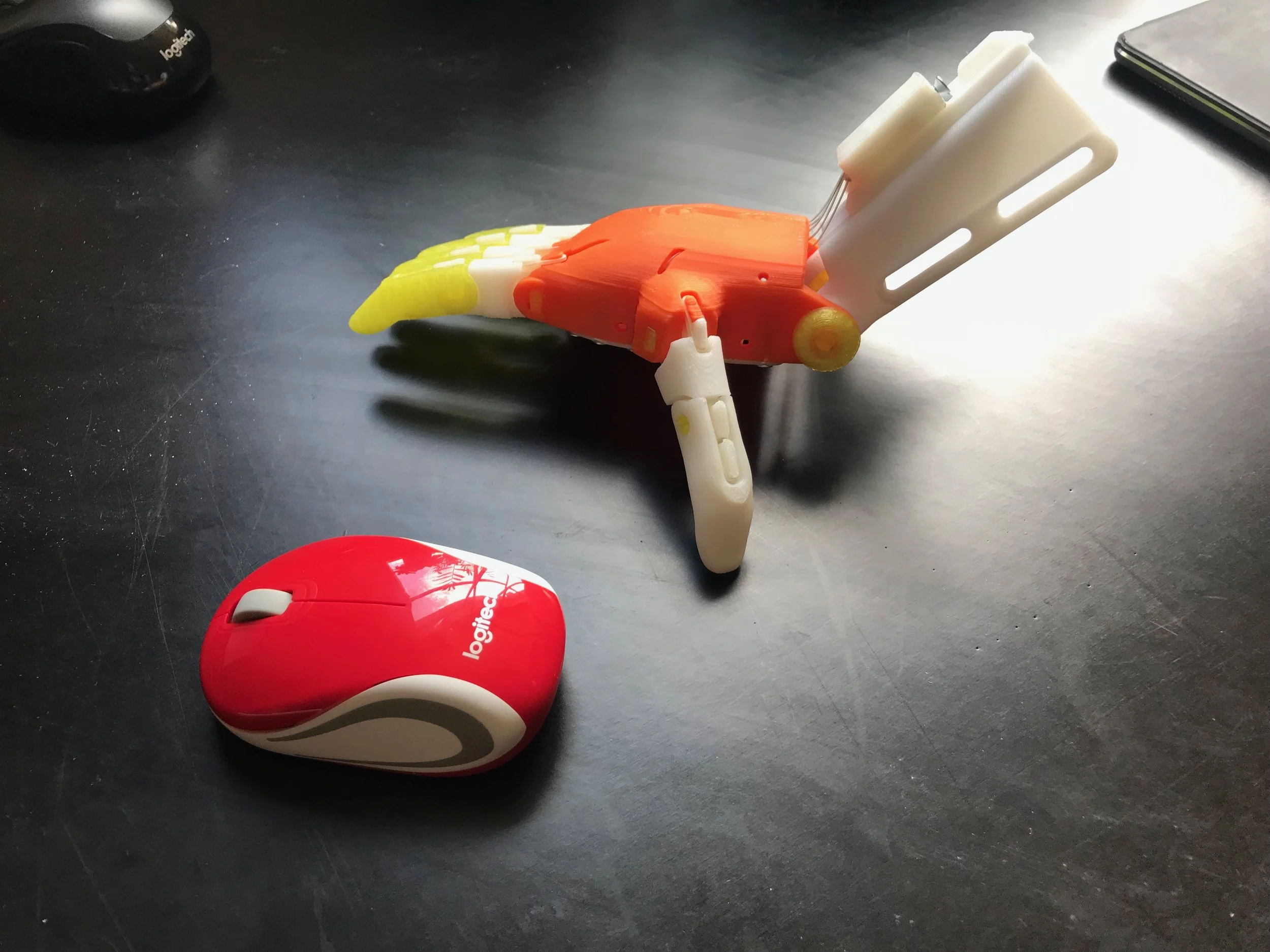Post 4 - Define
Understanding and breaking down mouse components.
Through personal experience with using a mouse and on consulting peers I established what I thought to be the successful use of a mouse. The level of success included how well it performed in controlling a range of programs. The users comfort was included and success was also extended to contain the users ability to physically access the device and assemble it.
The user needs to be able to control the mouse with their arm in a neutral position, double-click and single-click the left, click the right and scroll.
Other criteria included 3D printable, ease of assembly with minimal instruction and low cost.
It was determined from the existing products on the market.
The BeBionic a Myoelectric controlled hand was eliminated because of its expense and complexity.
Though multiple grip options was noted for future reference,
The Phoenix hand did not have enough functionality to activate individual controls, but was utilizing 3D printing successfully and had a large user base with experience of its assembly and use. The successful completion of this project required the device to be easy to assemble by a person with minimal skill and have the majority of the device made from a single 3D printed material. This conclusion was drawn from the success of the Phoenix and the Enabling the future community.
The Trackball required carrying an extra device which I believed was an unnecessary inconvenience.
And
The Camera mouse was very affordable though not accurate.
Enabling the future addresses the benefits of using prosthetics as more than physically holding items. The device is able to change a disability into something to be proud of. They state the aesthetic of the hand evokes a “superhuman” feeling in the users. This indicated function was only one aspect of why users used the device. For this reason, the function was intended to be combined into a device that also evoked superhuman feelings through its aesthetic. As opposed to using a device similar to a Trackball.
The target market of this design is people wanting to contribute to communities like Enabling the future, but unable, because of their limited access to computers because of hand disabilities. Because of the cost of computers, users will be generally from developed countries. They will also be of an age where growing is still occuring because of the expense and effort required to fit standard prosthetics on children is large, due to constant resizing.
Though brief, for a reference point I created an early design intent statement so I was able to quickly refer back to.
Design a 3D printable low-cost attachment for a prosthetic hand, so that growing children with limb-loss can use a computer mouse.


